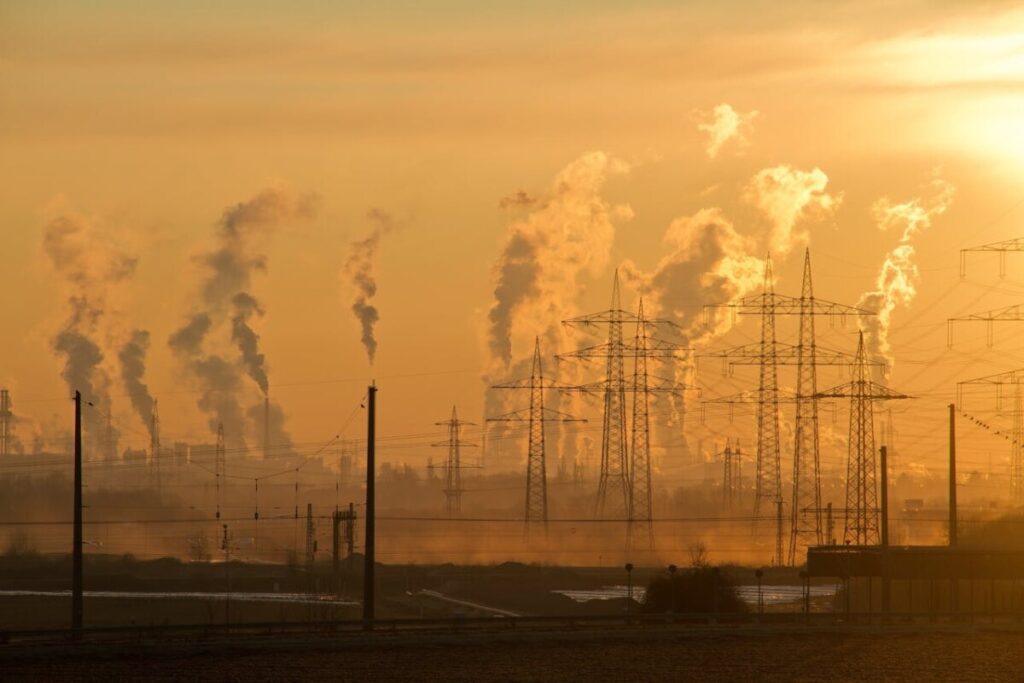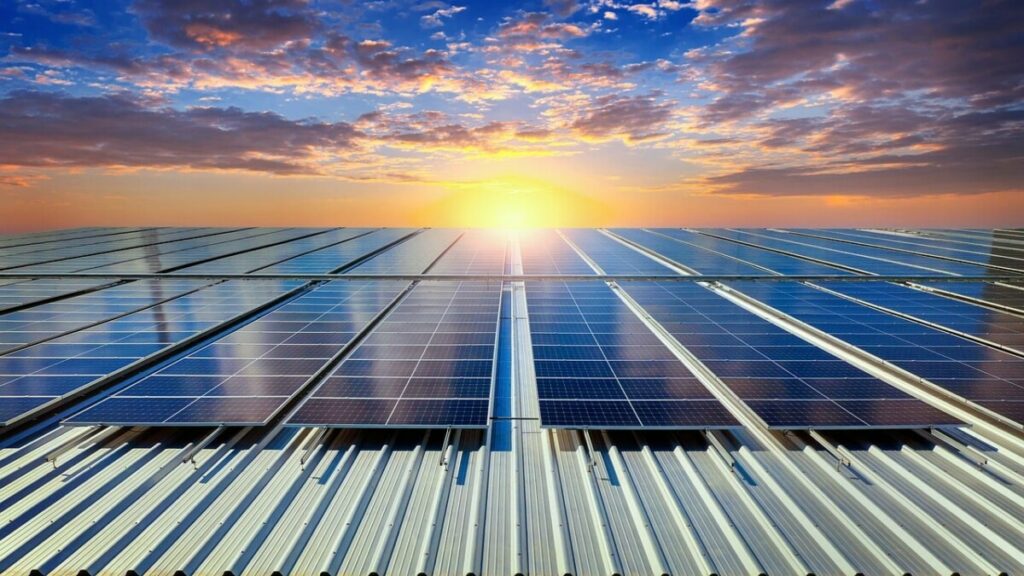Thermal Energy Means
Thermal energy means the energy that comes from the movement of particles within a substance. It is often referred to as heat energy and plays a crucial role in various processes and phenomena in our daily lives.
From boiling water to generating electricity, thermal energy is an essential form of energy that affects how we experience the world around us.
What Does Thermal Energy Mean?
In simple terms, thermal energy means the total kinetic energy contained in the random motion of particles in an object or system.
Whenever an object experiences a temperature change, the particles within that object move more quickly or more slowly. Contributing to the thermal energy present.
This form of energy is often associated with heat transfer and is responsible for many physical changes. Such as phase changes, within a substance.
But thermal energy means much more than just the warmth we feel; it is a vital part of how energy is transferred and utilized in both natural and man-made systems.
The Basics of Thermal Energy
At its core, thermal energy is a type of kinetic energy. It is caused by the motion of particles, such as atoms and molecules, in a substance.
When a substance is at a higher temperature, its particles move faster, increasing the thermal energy.
Conversely, when the temperature is lower, particle movement slows down, and the thermal energy decreases.
This movement is random, and the total energy depends on the speed and number of particles within a system.
Understanding how thermal energy means the movement of particles allows us to explore its practical applications, from industrial processes to space heating and beyond.
How Thermal Energy is Related to Other Forms of Energy
It is important to understand that thermal energy is just one form of energy. It is often transformed from other forms of energy, such as mechanical energy or chemical energy.
For example, in a heat engine, thermal energy is used to perform useful work by converting heat into mechanical energy.
In a geothermal power plant, thermal energy from beneath the earth’s surface is harnessed to generate electricity.
The first law of thermodynamics, also known as the conservation of energy, explains how energy cannot be created or destroyed but only transferred or transformed from one form to another.
This concept is key to understanding what thermal energy means in a broader context.
Moreover, thermal energy can be stored and transferred between objects. When two objects at different temperatures come into contact, heat transfer occurs. And the thermal energy moves from the object with a higher temperature to the one with a lower temperature.
This process continues until thermal equilibrium is reached, meaning both objects are at the same temperature.
Thermal Energy Means

Types of Thermal Energy Transfer
- Conduction: Involves the transfer of thermal energy through direct contact between materials.
- Convection: Occurs in fluids (liquids and gases) where warmer, less dense regions of the fluid rise and cooler, denser areas sink, causing a transfer of heat energy.
- Radiation: Involves the transfer of thermal energy through electromagnetic waves without the need for direct contact between objects.
Temperature Difference
A temperature difference is the driving factor behind the transfer of thermal energy between two objects or systems.
Heat will always flow from an object with a higher temperature to one with a lower temperature. Continuing until thermal equilibrium is reached.
This temperature difference is essential in processes like conduction, convection, and radiation, where the movement of heat relies on differences in thermal energy.
Each method of heat transfer plays a crucial role in various natural processes and technological applications. Such as space heating and electricity generation.
The Role of Thermal Energy in Everyday Life
Thermal energy means much more than just heat. It plays an integral role in various aspects of daily life, from heating systems to industrial processes.
For instance, space heating relies on the transfer of thermal energy to warm homes and buildings. In colder climates, the efficient use of thermal energy is critical for maintaining comfort and reducing energy costs.
Similarly, everyday items like hand warmers function by releasing thermal energy through chemical reactions, providing warmth in cold weather.
In our kitchens, thermal energy is used to cook food, with the heat generated through the burning of natural gas or the conversion of electrical energy into heat in an electric stove.
As the temperature rises, the motion of particles within the food increases, leading to the cooking process.
Even hot water in your home depends on thermal energy, as it is heated through a water heater that transfers energy to raise the water temperature.
Industrial Applications of Thermal Energy
Thermal energy also plays a crucial role in many industrial processes. In thermal power plants, for example, thermal energy is used to generate electricity.
This is often achieved by burning fossil fuels such as coal, oil, or natural gas, which releases heat. The heat produced is used to convert water into steam, and the steam drives turbines connected to electricity generators.
This process is a direct application of thermal energy transfer, highlighting how thermal energy means more than just heat—it powers the machinery that drives the modern world.
Furthermore, in industries such as steel production or glass manufacturing, the control and transfer of thermal energy are critical for shaping materials.
High temperatures allow metals to become malleable, and the process of cooling them affects their strength and structure.
In these instances, understanding what thermal energy means and how to control it effectively is essential for quality and efficiency.
Thermal Energy Means

Thermal Energy and Climate Change
A growing concern in today’s world is the relationship between thermal energy and climate change.
When fossil fuels are burned to produce thermal energy, carbon dioxide and other greenhouse gases are released into the atmosphere. Contributing to global warming.
The heat energy trapped in the atmosphere raises the Earth’s surface temperature, leading to extreme weather patterns, melting glaciers, and rising sea levels.
To combat climate change, renewable energy sources like solar energy and geothermal energy are increasingly being explored.
Solar energy harnesses the thermal energy from the sun’s rays, converting it into electricity without releasing harmful emissions.
Geothermal energy, on the other hand, taps into the Earth’s internal heat to produce power.
These renewable energy sources provide a viable option to reduce reliance on fossil fuels while maintaining the use of thermal energy for electricity generation.
How Thermal Energy Drives Natural Phenomena
In nature, thermal energy plays a critical role in driving phenomena such as ocean currents, weather patterns, and the water cycle.
For example, when the sun heats the Earth’s surface, warm water from the oceans evaporates, rises, and forms clouds.
This process transfers thermal energy from the Earth’s surface into the atmosphere, creating a temperature gradient that drives weather systems.
The flow of thermal energy in these systems demonstrates the immense power of heat in shaping the environment around us.
Hot springs and geothermal vents are examples of natural formations where thermal energy means the flow of heat from beneath the Earth’s surface to the environment.
These locations can reach extremely high temperatures, and the constant transfer of heat creates unique ecosystems that rely on this form of energy.
Thermal Energy Means

Understanding the Transfer of Thermal Energy
Thermal energy transfer occurs through three primary mechanisms: conduction, convection, and radiation.
Each method of heat transfer plays a significant role in everyday life and industrial applications.
Understanding these processes is crucial for realizing how thermal energy means the movement of energy in different physical systems.
Conduction happens when heat transfers through direct contact between molecules in a solid object. For instance, when a metal spoon is placed in hot water, heat travels from the water to the spoon.
This process occurs due to the vibration and movement of particles from the hotter object to the cooler one. Transferring thermal energy until a state of thermodynamic equilibrium is achieved.
Convection involves the movement of thermal energy in fluids, such as liquids and gases. In this process, warmer areas of a fluid rise while cooler areas sink, creating a circular motion.
For example, convection currents in the atmosphere are responsible for weather patterns, where warm air rises and cool air sinks, causing wind.
Similarly, convection plays a vital role in heating systems, where warm air circulates through a space, gradually raising the temperature.
Radiation is the transfer of thermal energy through electromagnetic waves. Unlike conduction and convection, radiation doesn’t require a medium to transfer heat.
The most common example of radiation is the heat we feel from the sun. Which travels through the vacuum of space to warm the Earth’s surface.
Radiation is a critical aspect of thermal energy transfer, particularly in understanding solar energy and its applications.
The Relationship Between Thermal Energy and Temperature
One of the key factors in understanding what thermal energy means is its relationship with temperature.
While thermal energy refers to the total kinetic energy of particles in an object, temperature is the measure of the average kinetic energy of those particles.
Therefore, an object with a higher temperature has more rapidly moving particles, contributing to greater thermal energy.
It’s important to note that while temperature and thermal energy are related, they are not the same.
For example, a large body of cold water may have more thermal energy than a small, hot object because thermal energy depends on both the temperature and the amount of matter present.
Potential Energy
Potential energy refers to the stored energy in an object due to its position or state.
When thermal energy increases within a system, potential energy can change, particularly during phase changes like melting or boiling, where energy is absorbed but the temperature remains constant.
This relationship between potential energy and thermal energy is crucial in understanding processes such as evaporation and condensation.
The concept of specific heat capacity further explains how different materials store and transfer thermal energy.
Specific heat capacity is the amount of heat required to change the temperature of a substance by a specific amount.
Substances with a high specific heat capacity, like water, require more energy to increase their temperature compared to substances with a lower specific heat capacity.
Thermal Energy Means

Practical Applications of Thermal Energy
Thermal energy means much more than just the heat we feel; it has numerous practical applications in various industries and technologies.
For instance, in steam engines, thermal energy is used to convert water into steam, which then drives mechanical components.
This principle is also utilized in thermal power plants, where steam is used to generate electricity.
The first law of thermodynamics, which states that energy cannot be created or destroyed, only transferred or transformed, is constantly at play in these systems.
In everyday life, thermal energy is used in heating, cooking, and even generating electricity.
Systems such as geothermal energy plants take advantage of the Earth’s internal thermal energy to produce power without relying on fossil fuels, offering a sustainable alternative to traditional energy sources.
Moreover, thermal energy has become essential in combating cold weather. Devices like space heaters, fireplaces, and even hot water systems rely on the transfer of heat energy to keep living spaces warm and comfortable during the winter months.
Thermal Energy Means: Frequently Asked Questions (FAQs)
What does thermal energy mean in simple terms?
Thermal energy means the energy that comes from the movement of particles within a substance, often experienced as heat.
How is thermal energy different from temperature?
Thermal energy refers to the total kinetic energy of all particles in a system. While temperature is the average kinetic energy of the particles.
What are the methods of transferring thermal energy?
The three methods of transferring thermal energy are conduction, convection, and radiation.
Can thermal energy be converted into other forms of energy?
Yes, thermal energy can be converted into other forms of energy, such as mechanical energy in heat engines or electrical energy in power plants.
How does thermal energy affect the environment?
Thermal energy from human activities, especially from burning fossil fuels, contributes to global warming by increasing the Earth’s surface temperature.
Thermal Energy Means

The Importance of Thermal Energy in Renewable Energy Solutions
As the world shifts towards sustainable energy sources, the role of thermal energy is becoming increasingly important.
Thermal energy means the capacity to harness the heat from renewable sources such as the sun and the Earth.
Solar energy, for example, captures the sun’s rays and converts them into heat, which can be used to generate electricity through solar thermal power plants.
These plants use the collected solar heat to produce steam, which drives turbines and generates power. This method offers a clean, sustainable alternative to traditional fossil fuel-based power generation.
Similarly, geothermal energy taps into the Earth’s internal heat to provide a consistent and reliable source of thermal energy.
Geothermal plants extract heat from beneath the Earth’s surface, converting it into electricity or using it directly for space heating.
This renewable resource is a key player in reducing carbon emissions and combating climate change, offering a sustainable way to meet global energy needs.
Thermal power plants that utilize renewable energy sources are not only reducing reliance on fossil fuels but are also playing a significant role in mitigating the effects of global warming.
By converting thermal energy into mechanical or electrical energy, these systems exemplify the first law of thermodynamics by transforming one form of energy into another without loss of the total energy in the system.
Thermal Energy and the Conservation of Energy
Understanding thermal energy means acknowledging its relationship with the conservation of energy principle.
According to the first law of thermodynamics, energy cannot be created or destroyed, only transferred or transformed.
This principle is evident in how thermal energy interacts with other forms of energy.
For example, in a heat engine, thermal energy is converted into mechanical work, allowing engines to power vehicles, machinery, and other industrial processes.
Thermal equilibrium is another key concept tied to the conservation of energy.
When two objects with different temperatures come into contact, the thermal energy will naturally flow from the object with the higher temperature to the one with the lower temperature until both objects reach a constant temperature.
This process underscores how the transfer of thermal energy leads to a balance within a system, maintaining the conservation of total energy.
Thermal Energy Means

How Thermal Energy Impacts the Human Body
Thermal energy also has a direct impact on the human body. The body generates internal energy through metabolic processes, converting chemical energy from food into thermal energy, which helps maintain body temperature.
This thermal energy is crucial for regulating physiological functions, particularly in cold environments.
Hand warmers, for example, release thermal energy through a chemical reaction, providing heat that helps the body stay warm in low temperatures.
In hot environments, the human body relies on processes like sweating to dissipate excess thermal energy.
This helps prevent overheating and ensures that the body remains within a safe temperature range.
Thus, thermal energy means not only the energy we experience externally but also the energy that keeps our bodies functioning properly.
Conclusion: Thermal Energy’s Role in a Sustainable Future
In conclusion, thermal energy means more than just heat—it is a fundamental part of the energy systems that power our world.
Whether it’s heating homes, generating electricity, or driving industrial processes, thermal energy plays a critical role in both daily life and the global energy landscape.
As society moves toward more sustainable practices, the harnessing of renewable energy sources like solar and geothermal energy demonstrates how thermal energy can be a vital component of a greener future.
Moreover, understanding the flow and transfer of thermal energy, as well as its impact on the environment and the human body, allows us to better appreciate the intricate ways this energy influences our lives.
By leveraging technologies that optimize the use of thermal energy, we can contribute to a more efficient and sustainable energy future.
Thermal Energy Means: Frequently Asked Questions (FAQs) Continued
How is thermal energy used in renewable energy sources?
Thermal energy is used in solar thermal power plants and geothermal energy systems to generate electricity through the transfer of heat energy.
What is the first law of thermodynamics in relation to thermal energy?
The first law of thermodynamics states that energy cannot be created or destroyed but can only be transferred or transformed from one form to another. In terms of thermal energy, this principle applies to the conversion of heat into mechanical or electrical energy.
How does thermal energy affect the human body?
Thermal energy helps regulate body temperature through metabolic processes and external factors. Such as heating or cooling, ensuring the body stays within an optimal temperature range.
What is thermal equilibrium?
Thermal equilibrium occurs when two objects of different temperatures exchange heat until both reach the same temperature, ensuring a balance in thermal energy.
Can thermal energy be stored?
Yes, thermal energy can be stored in systems such as thermal energy storage units. Where heat is conserved and later released for use in heating or electricity generation.
Recent Posts
Understanding Energy and Electricity: The Power For Progress
Energy and Electricity Energy and electricity are integral components of modern life, powering everything from homes and businesses to transportation and communication. Without them, the...
The Future of Wind Energy The future of wind energy is set to play a critical role in addressing global energy needs while combating climate change. As renewable energy sources like wind and...


